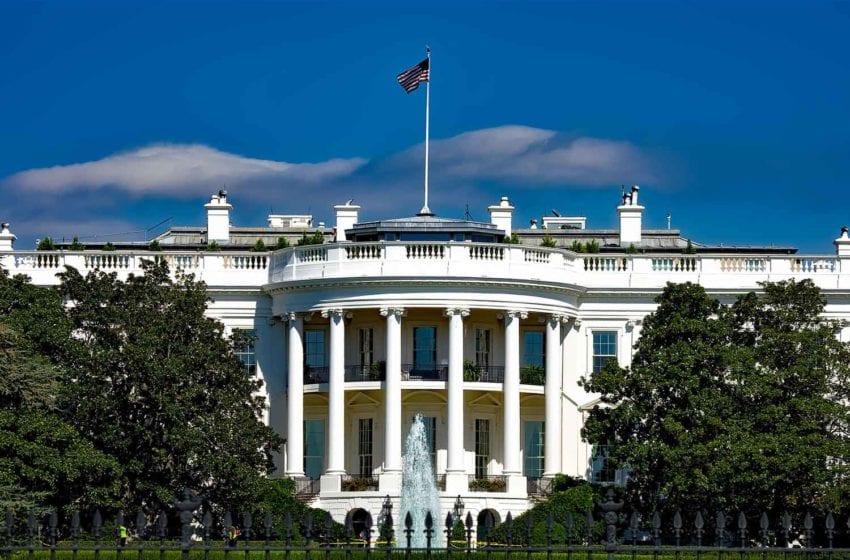As the economic crisis in their country persists, Russians turn to cheaper smokes.
By Stefanie Rossel
The news was accompanied by a telling choice of words: In July 2015, Japan Tobacco International (JTI), the leading cigarette manufacturer in Russia, announced that it would close its Moscow-based Liggett-Ducat factory by mid-2016 due to a “serious contraction” in the country’s tobacco market.
In the statement, the company said that the operating environment had changed dramatically in Russia, with significant declines in tobacco demand driven by tax increases, tighter regulations and a challenging economic situation. The Moscow facility will be gradually reducing its output, a JTI representative told Tobacco Reporter. By the middle of next year, the company will consolidate all of its production operations at its Petro factory in St. Petersburg.
JTI insisted that all cigarette brands demanded by the market and produced at Liggett-Ducat would remain available.
Since ratifying the World Health Organization’s Framework Convention on Tobacco Control in 2008, Russia has gradually introduced tougher legislation in order to cut the country’s smoking prevalence, estimated at 40 percent in 2013, to 25 percent in 2020.
Measures included the introduction of comprehensive smoking bans: Since June 1, 2013, smoking has been prohibited in administrative buildings, hospitals, schools, cultural and sports facilities, and workplaces. On June 1, 2014, the ban was extended to cafes, restaurants, hotels, bars, nightclubs, playgrounds, public transport and station platforms. Fines for violations are high.
In addition, tobacco advertising has been banned from the mass media; cigarettes can no longer be openly sold in stores, while kiosks are prohibited from selling tobacco products altogether. In other words, Russia, the world’s second-largest cigarette market by volume after China, has turned “dark.”
Repeated tax hikes contributed to the negative development; the minimum excise rate for cigarettes has risen five times over the past six years. Between 2007 and 2012, excise tax rates on tobacco products in Russia increased by more than 420 percent, according to JTI. January 2014 saw a record tax hike of 42 percent. As a consequence, the Russian cigarette market has been shrinking in volume for six consecutive years now.
To make matters worse, the ruble exchange rate collapsed in the second half of 2014, driven by a fall in oil prices and Western sanctions imposed on Russia following the events in Crimea and in eastern Ukraine. Russia slipped into a financial crisis that is likely to continue unless oil prices recover and the sanctions are lifted.
Rapid decline
The economic downturn has begun to impact the Russians’ smoking behavior. “We saw a decline of 8.6 percent in cigarette volume sales in 2014 and concur with the manufacturers in projecting a similar decline in 2015,” says Shane MacGuill, tobacco industry analyst at London-based market research company Euromonitor International. The two most recent declines mark a dramatic reversal of fortunes. Between 2000 and 2013, MacGuill points out, the Russian market had grown almost uninterruptedly and never recorded a decrease of more than 2 percent. “I think everyone was surprised by the speed and scale of the deterioration of the Russian market,” he says. “The key question is, ‘what comes after [2015]?’ We see the level of decline moderating up to 2019, whereas some of the manufacturers may be more pessimistic.”
Erik Bloomquist, senior tobacco analyst at Haitong Securities, is more optimistic. “The Russian market in 2015 has developed better than expected, and it is difficult to attribute much consumption effect to the extended bans on smoking, sales and advertising,” he says. “Of more importance are the price increases, but even with increases in the market of rub12 ($0.19) to rub14 so far this year, the level of volume declines has been better than anticipated.”
The Russian market is dominated by the four international players. In the first half of 2015, JTI led the market with a share of 33.8 percent, according to Nielsen, followed by Philip Morris International (PMI) (27.6 percent) and British American Tobacco (BAT) (21.5 percent). Bloomquist estimates Imperial Tobacco Group’s (ITG) share during that period to be 6 to 8 percent. Donskoy Tabak, Russia’s largest independent tobacco manufacturer, said in a March 2015 statement that it had increased its market share in 2014 to 8.8 percent, claiming fourth rank. Smaller, independent companies together account for the remainder.
Distribution is key in the world’s largest country. In late 2013, PMI and JTI had acquired 20 percent stakes each in Russian distributor Megapolis, which handles approximately 70 percent of the cigarettes sold in Russia, to further strengthen their market position. ITG also has Megapolis as its Russian distributor.
Driven by 2014’s legislative change, the number of retail sales points declined to an estimated 250,000 in 2015 from 325,000 in 2013. Despite the government’s tough anti-tobacco stance, Russia’s national mail service in August signed an agreement to sell the leading multinationals’ cigarettes at 30,000 post offices across the country.
According to Euromonitor data, retail volume sales in Russia amounted to 316.5 billion sticks in 2014, down from 346.3 billion units in 2013. For 2015, Euromonitor forecasts sales of 289.9 billion sticks. While volume sales are falling, the Russian market remains a profitable one. Quoting Euromonitor data, www.tobaccofreekids.org estimates retail values to have increased 65 percent to $28 billion from 2008–2014. In the same period, volume sales were down 20 percent.
Russia is behaving like a mature market, with volume declines offset by pricing, according to Bloomquist. “As a result of volume declines in the market over the past decade or so, the manufacturers have to keep optimizing their Russian manufacturing footprint,” he explains. JTI’s recent factory closure fits into that pattern. But even as volumes contract, Russia remains a key focus for all manufacturers. “Cigarette volume and value are likely to continue to diverge, with volumes declining due to tax and price increases, with value rising for the same reasons,” says Bloomquist.
Trading down
For the time being, however, in light of inflation, stagnating incomes and falling living standards, Russians have taken to cheaper smokes. “The big story of 2015 in Russia appears to be downtrading, or at least a substantial stalling of the uptrading narrative,” says MacGuill. “The very bottom of the market, sub-value, seems to be losing volume, as is the premium segment with the biggest growth in value products. Manufacturers are producing packs with more sticks [25+] in order to provide value to the consumer.”
“Russia is facing a decrease of consumption volumes and a trend of downtrading; consumers are postponing purchases of durable goods,” says Oliver Kutz, general manager of Imperial Tobacco Russia. “This crisis will make Russian consumers even more rational and focused on the search for the best value solutions and products. So price will be a determining factor. In our industry, the economic situation is conducive to the growth in demand in the low and value segments,” he says. The company’s Maxim value brand achieved a record market share in its 15th anniversary year, driven by the strong growth of the big-box (25 cigarettes) format.
Building on moderate taxation
So what about the future? “Without wanting to state the obvious, much will depend on how quickly the Russian economy recovers—assuming it gets no worse—and whether government sticks rigidly to the outlined tax increases,” says MacGuill.
The most recent amendment of Russia’s tax code, which was signed into law in November 2014, was a step in the right direction. “This time the tax policy approach is well-balanced. The government-announced excise tax rates for 2016 and 2017 presumably will not be changed, which provides a stable and predictable environment and ensures sustainable excise revenue growth for the government,” explains Kutz. “We hope it stays this way.”
The January 2015 tax hike saw specific taxes increase by 20 percent for filtered and unfiltered cigarettes to reach rub960 per 1,000 sticks; ad valorem tax increased by 2.5 percentage points to 11 percent. In 2016, specific taxes will increase by 30 percent to rub1,250 per 1,000 sticks for filtered and unfiltered cigarettes, while ad valorem tax will be raised to 12 percent. The planned hikes for 2017 are an increase of 13.6 percent or rub1,420 per 1,000 sticks for specific taxes, whereas ad valorem tax will go up to 13 percent.
Previous excise duty increases had contributed to a flourishing illicit tobacco trade, a problem largely unknown in Russia until 2011. In just five years, the illegal cigarette trade grew 14 times over in Russia, from 0.1 percent of all tobacco sales in 2010 to 1.4 percent by the end of 2014, according to TNS, a market research company. Although the market share of illegal products is still relatively low, the rate of their growth raises serious concerns. In the first quarter of 2015, the illicit market grew by 40 percent against the same period the previous year, according to JTI. The growth was driven primarily by an increasing volume of counterfeit products.
To stem the tide, Russia’s government recently passed a law that drastically raises fines for people caught selling counterfeit products and introduces criminal penalties for cigarette smuggling. Furthermore, prospective tax harmonization within the Eurasian Economic Union, which consists of Armenia, Belarus, Kazakhstan, Kyrgyzstan and Russia, will diminish incentives for illicit trade. “This effect is due to border countries likely raising their tax rates,” forecasts Bloomquist.
Despite the difficult situation in Russia, Bloomquist remains upbeat. “The market retains potential for further value growth, particularly in the mid- to higher-priced tiers,” he says. “Brands that are established can still innovate in packaging, form and format, and these innovation efforts continue to support pricing and differentiation among consumers, even if consumer communication is more constrained.”
“The key narrative for the Russian market has been of the uptrading potential,” echoes MacGuill. “Cigarette manufacturers will be hoping that this narrative is still the underlying one and that once Russia’s economic performance has improved, Russian consumers—likely notably fewer in total—will once again begin purchasing more expensive products. This is far from certain, but it is a viable hypothesis. Russia is also of course a potentially massive market for alternatives to tobacco, such as e-cigarettes.”
The economic crisis could also be an opportunity, says Kutz: “Russia is still a growing market with a professional and well-educated workforce. A weak ruble certainly provides a good rationale for maintaining a strong manufacturing base here, not only to supply the Russian market but also using it as an export base for outlying markets. We’ve certainly been successful in doing this, and many other industries, I believe, are doing the same.”













